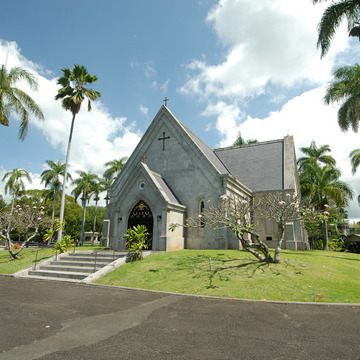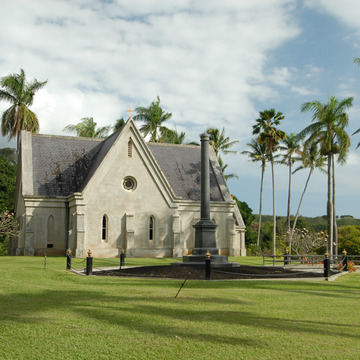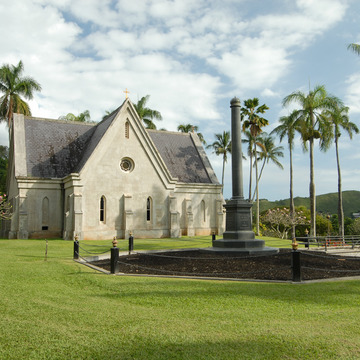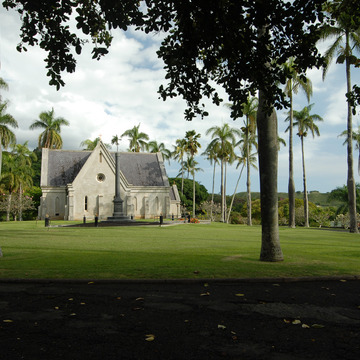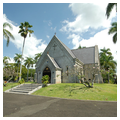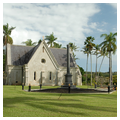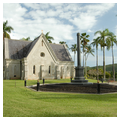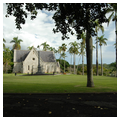Built to house the bodies of Kamehameha IV and his four-year-old son, who had died in 1863 and 1861, respectively, this Gothic Revival coral-block building follows a Latin cross plan. Upon completion of the mausoleum in 1865, eighteen coffins of kings and aliʻi were removed from the Iolani Palace grounds and interred here. Subsequently, these bones were moved into family crypts on the mausoleum's grounds and the building was converted into a chapel in 1922, thanks to the generosity of Prince Kuhio's widow, Princess Elizabeth Kahanu Kaauwai Kalanianaole. The lavish koa interior dates from a remodeling in 1950. The building was restored in 1987.
A United States congressional declaration exempts in perpetuity Mauna Ala from all land laws, transactions, and uses other than a royal burial site. It is the only place in the nation that the flag of the Kingdom of Hawaii is permitted to fly unaccompanied by the American flag.


